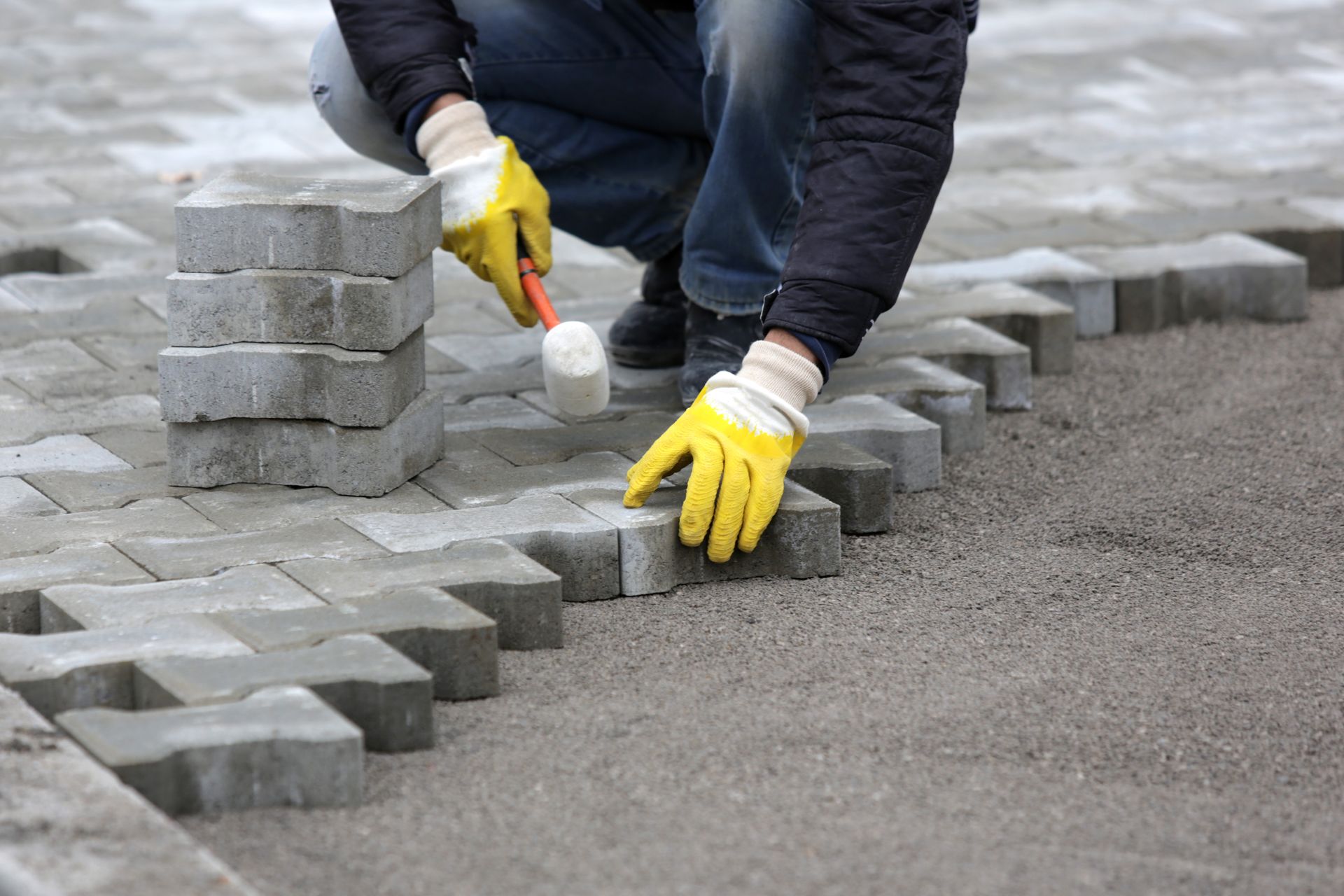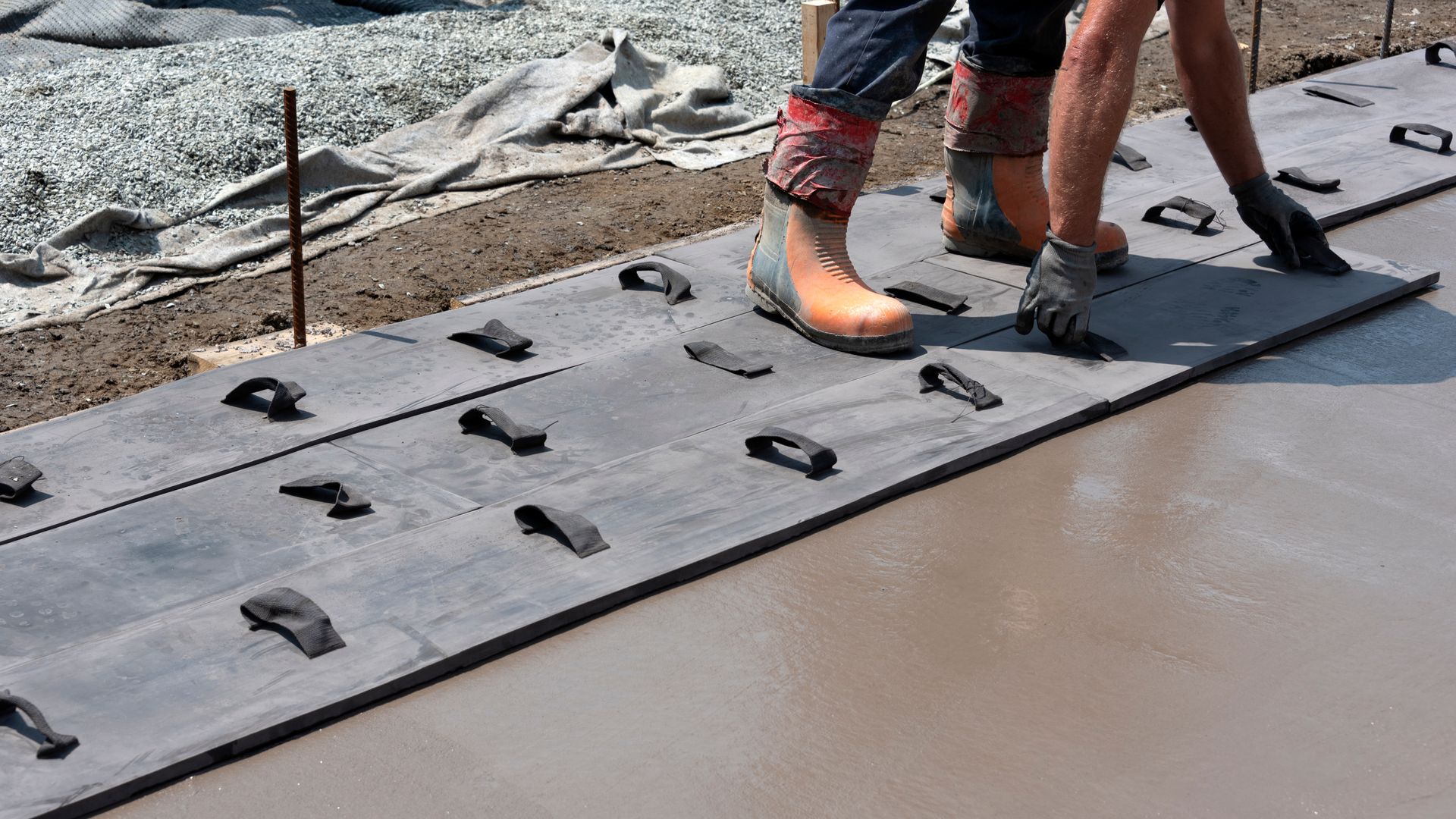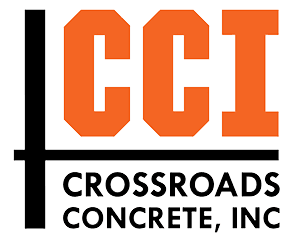Stamped Concrete vs. Pavers: What’s Best for Your Patio?
Share this Article:
Thinking about
upgrading your outdoor space? If you're planning a new patio, two materials usually top the list: stamped concrete and pavers. Both offer a finished, polished look, but they perform differently when it comes to cost, maintenance, and long-term durability. At
Crossroads Concrete, we've seen how each option holds up in Illinois over time. Here's a closer look to help you decide what makes the most sense for your home.
What are Concrete Pavers?

Concrete pavers are individual units made from molded concrete. They’re typically installed in patterns over a compacted gravel and sand base. You’ll often see them used in patios, walkways, and driveways. They come in a variety of shapes and colors, and some are designed to mimic brick or stone.
Pavers are known for being strong and easy to replace if one cracks or chips. Since they’re installed piece by piece, repairs usually involve pulling out and resetting a few units instead of redoing the whole surface. That said, the gaps between pavers can invite weed growth or settle unevenly if the base shifts over time, especially in freeze-thaw climates like ours in Central Illinois.
What is Stamped Concrete?
Stamped concrete is a poured concrete surface that’s textured and colored to resemble materials like stone, brick, slate, or wood. Once the concrete is placed and leveled, large mats or rollers are pressed into the surface to create a pattern before it hardens. Color can be added during the mixing stage or applied to the surface for more depth and contrast.
This method gives you the look of premium materials without the higher cost or long installation time. Since it’s a continuous slab, there are no joints for weeds to grow through, and the surface tends to stay more even over time. Homeowners often choose stamped concrete for patios because it combines design flexibility with long-term performance.
Stamped Concrete vs Pavers: Key Differences Explained
Stamped concrete and pavers both offer durable patio surfaces, but they take different approaches. Pavers are installed piece by piece and can shift or settle over time. Stamped concrete is poured as one solid surface, which helps prevent movement and weed growth. The materials, labor, and long-term upkeep also differ between the two.
Cost Comparison
Upfront, stamped concrete usually comes in at a lower total cost than pavers. Since it’s poured and finished in larger sections, the labor is faster and more efficient. Pavers take more time to install because each piece is set individually, which adds to both labor hours and overall price.
Material costs for pavers can also be higher, especially if you're going for premium styles. The base prep is more involved, too, often requiring additional layers of gravel and sand. Stamped concrete still needs a proper base, but the process is more streamlined, which helps keep the final price down.
Design & Aesthetic Appeal
Both options can improve the look of a backyard, but stamped concrete offers more freedom in design. It can mimic natural stone, brick, tile, or wood, and the pattern gets applied across the entire surface for a cohesive finish. The texture and color can be adjusted to match your home’s style or existing outdoor features.
Pavers come in pre-set shapes and sizes, which can limit layout choices. While they can still look sharp, the final design depends heavily on the type and pattern of paver selected. Because of the joints between each piece, the surface often looks more segmented.
Color & Pattern Variety
Stamped concrete gives you a wide range of color and pattern combinations. Installers can use color hardeners, integral color, and surface stains to create layered tones that look natural and detailed. Patterns can be customized to resemble anything from hand-laid stone to textured tile.
Pavers come in standard colors and finishes, which are chosen at the factory. While there are some options available, what you see is what you get. Once installed, pavers maintain a consistent look, but there's less room for blending or creative detailing compared to stamped concrete.
Installation Process & Timeline
Installing stamped concrete is generally quicker than laying pavers. After forming and grading the area, the concrete is poured, colored, and stamped in one continuous process. Once it cures, it’s ready for sealing and use. For most patio projects, this can be completed in just a few days, depending on weather and size.
Pavers require more steps. The area must be excavated, then built up in layers using compacted gravel and sand. Each paver is placed by hand, leveled, and then the joints are filled. The process is more labor-intensive and usually takes longer to finish, especially for larger or more detailed layouts.

Maintenance & Long-Term Care
Stamped concrete is low-maintenance when sealed properly. A good sealer protects the surface from stains, moisture, and fading. Resealing every few years helps maintain its color and finish. Since the surface is solid, you won’t have to deal with weeds or shifting pieces.
Pavers usually need more frequent attention. Weed growth between joints is common unless you use a joint stabilizing sealer or polymeric sand. Over time, pavers can shift, settle, or become uneven, especially in freeze-thaw conditions. While individual pieces are easy to replace, keeping the surface level and clean requires ongoing upkeep.
Get Your Dream Patio with Crossroads Concrete
Stamped concrete gives you a clean, finished look without the hassle of individual pieces shifting or weeds growing through the surface. It's built to handle Central Illinois weather and gives you more freedom when it comes to patterns and color.
At Crossroads Concrete, we take the time to plan each project the right way. We listen to what you want, offer honest feedback, and think through the layout, drainage, and finish so the result works for your space. Our team has over a decade of experience, and we take pride in doing the job right.
Give us a call or request an estimate through our website today. Let’s get your project moving.
